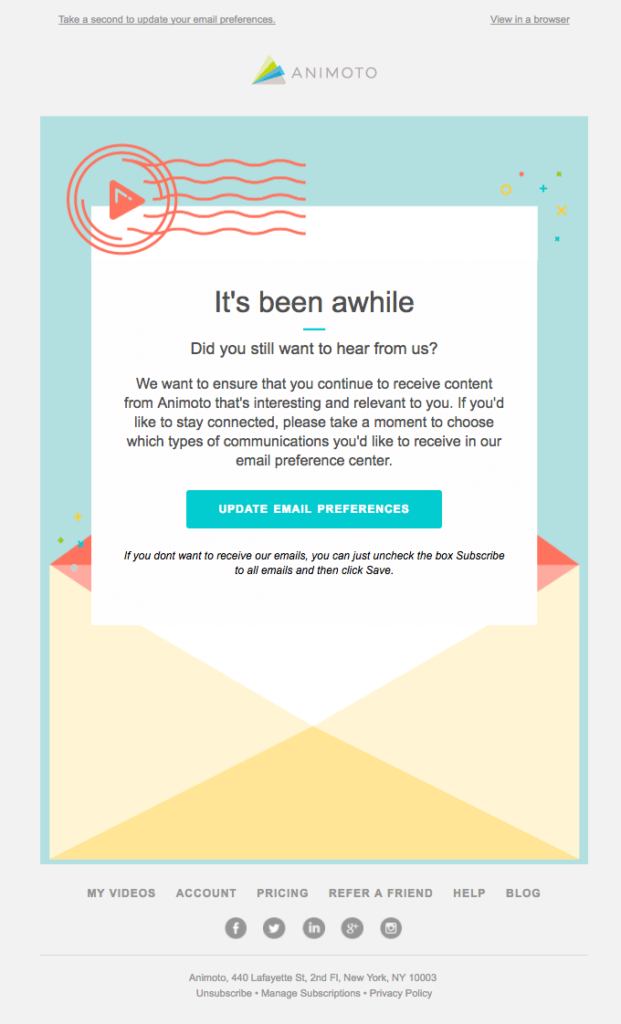Email Copywriting Formula for High Conversions

Writing an impactful email copy is of paramount importance. You ought to stand out in the subscriber’s inbox inundated with hundreds of emails. Email copywriting is an art and science that works on the fundamentals of understanding customer psychology and facilitating their decision-making. The foundation of an engaging copy is brevity, clarity, and relevance.
There are a number of email copywriting formulae that can help you win over your customers and make their purchases from you.
Let’s delve deeper into the most powerful copywriting formulae to create high-converting emails.
PAS Formula
Problem-Agitate-Solve is the simplest of all formulae. It is easy to learn and apply. Marketers use it extensively in emails, social media posts, and practically every material.
Here are the components that make up the PAS formula.
P: Problem —- Make the reader aware of the problem
A: Agitate —- Get the user to realize how the problem affects their life and business
S: Solve —- Let the person know how your products can work as a solution to their problem
FAB Formula
FAB formula refers to Features-Advantages-Benefits. More often than not, marketers focus on talking about the features in the email copy. They include technical jargon that might not be comprehensible for an average reader. Through this formula, you can promote a new product in the email and talk about your unique value proposition.
FAB represents:
F: Features —- The unique and useful features that you want to promote
A: Advantages —- How the feature can help the users
B: Benefit —- How is the advantage relevant to your target audience
BAB Formula
FAB formula is all about the product features while BAB formula taps into the emotional instinct of the users. Here’s an explanation of this formula.
BAB represents:
B: Before —- Present the problem faced by your target audience
A: After —- Let the users know the status after resolving the problem
B: Bridge —- Explain the solution that helped overcome the issue
AIDA
The oldest copywriting formula is AIDA (Attention, Interest, Desire, and Action). Elmo Lewis invented it nearly a century ago.
AIDA stands for:
Attention: Hook the reader and bring their attention with a compelling statement
Interest: Sustain their attention with an interesting statement
Desire: Let the user know how the product will make lives easier for them and pique their desire
Action: Inform them about the action to be taken to experience the same
Take a look at this email by Dau Relationship Marketing that nails the AIDA copywriting formula.

ACCA
ACCA stands for:
A: Awareness of the problem
C: Comprehending the problem with the help of an explanation
C: Conviction to combat the challenge
A: Action that will help resolve it
It works on the principle of empathy. It works wonders for non-profit organizations looking forward to raising donations for their noble cause.
4 Ps
Just like the screenplay of a movie follows the three-act structure, namely the setup, midpoint, and resolution, email copywriting can conform to the 4 Ps formula.
4 Ps refers to:
Problem: What is the user’s primary challenge?
Picture: After the resolution of the issue, what does the prospect wish to achieve?
Proof: Offer evidence that you will be able to solve the problem
Proposal: Let the reader know how they will be able to reach the solution.
Storytelling
We are naturally more receptive to stories. Tell a relevant story through your email and your subscribers will surely be inspired to take action. You can use client success stories as social proof to make your emails more engaging for the readers. Such testimonials will encourage more users to purchase from you.
4 Cs
Another formula that comes in handy for creating emails is the formula of 4 Cs.
It stands for Clear, Concise, Compelling, and Credible.
You should be able to convey the message clearly without beating around the bush, especially when you start an email. Also, it should exude authenticity and be compelling enough for the readers to take action.
Nine-word formula
This formula by Dean Jackson is especially useful for re-engagement emails. It uses a nine-word template that reminds the user if they are still looking for the service.
For example, Travel agencies can send out an email saying: “Are you still looking for a hotel in Chicago?”
It will instantly trigger the recipient’s thought process and persuade them to take action.
Take a look at this email by Animoto that makes perfect use of this formula.

These are nine of the most popular email copywriting formulas. Besides these, there are some generic copywriting tips and tricks that you must remember to create an effective email marketing strategy.
Always have a definite goal
Whether it is generating webinar attendees or conversions for your eCommerce store, have a specific goal for your emails. It will help you write meaningful and effective copy that will be relevant for the readers and drive faster business growth. Define the tone of the email according to its purpose and target audience. Is it for a potential client, existing customer, or dormant lead? The subject line, the language of the copy, CTA, and graphics should be in line with the action you expect from the subscribers.
Personalize the email copy
Consider the user’s past purchases, resources downloaded, and products searched for. Accordingly, personalize the email copy with valuable information that will appeal to the users. Creating tailor-made emails is of paramount importance to cut through the noise and get more click-throughs.
Write an engaging subject line
Many marketers consider the email subject line an afterthought. That’s a huge mistake. Pay attention to your email subject lines; give yourself enough time to craft a catchy subject line that makes the users open your email.
Proofread before hitting the send button
Before you send out the email, proofread for any grammatical errors or typos. Use apps like Grammarly and Hemingway App Editor so that you don’t miss out on any mistakes.
Wrapping Up
Your guide to writing high-converting email copy is right here. Although AI writing tools are getting immensely popular in recent times, email copywriters and a humanized approach will never go out of style. Make sure you follow all these tips to create emails that bring business growth and conversions.
Featured image by Mikhail Pavstyuk on Unsplash
